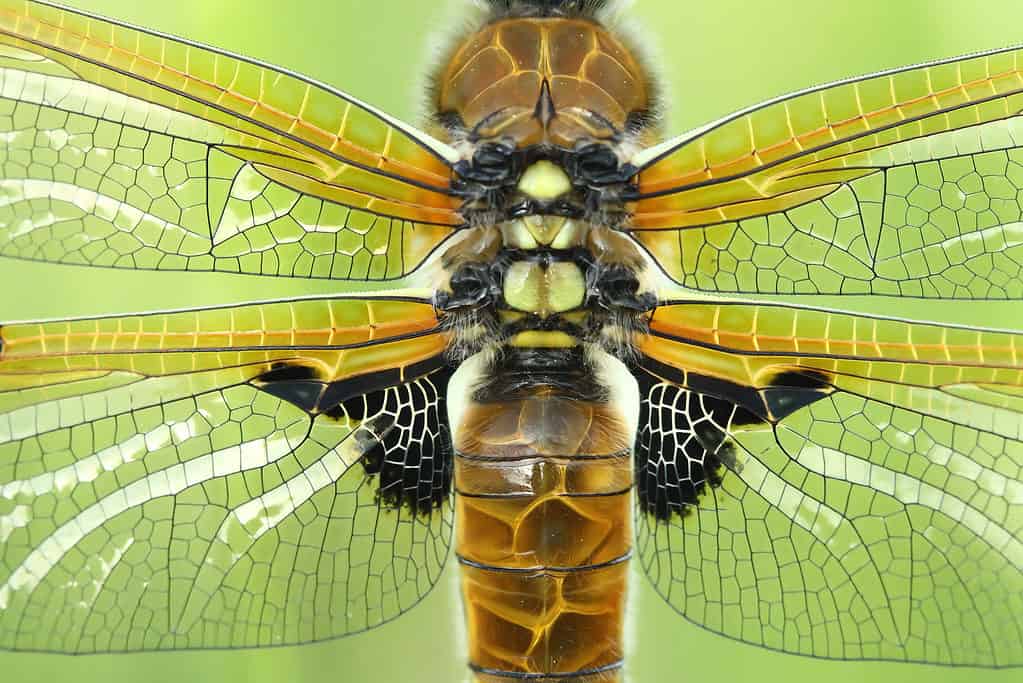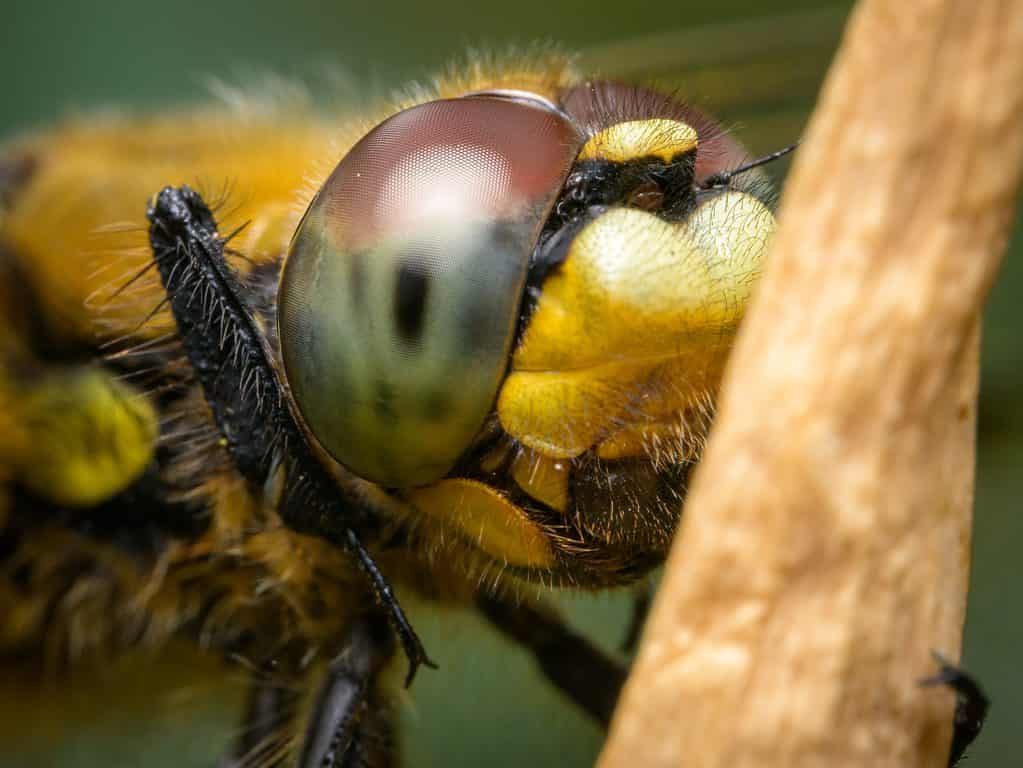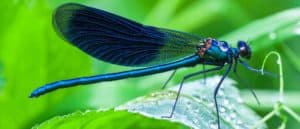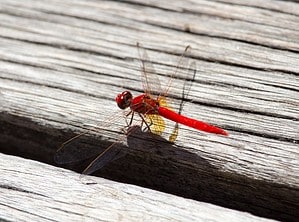Experience the great outdoors by participating in exhilarating adventures like glacier trekking or kayaking or more leisurely pursuits like climbing, cycling, swimming, and camping, or just by relaxing and soaking in the breathtakingly beautiful outdoor land.
For opportunities to see animals, including bears and whales, take a train excursion, day cruise, or flightseeing tour. Take part in celebrations or cultural tours to learn about Alaska Native culture.
There are plenty of critters to spot in this state as well! When most people think of animals in Alaska, they picture ferocious bears, giant moose, and the beloved Siberian husky. Did you know the official Alaska state insect is the Four-Spotted Skimmer Dragonfly?
It was given this designation in 1995 and is one of the numerous dragonfly species that can be found all over the world including in the United States. It’s not exactly what someone from outside of the chilly state would imagine for a chosen insect! Let’s talk about this dragonfly’s connection to Alaska, how to identify it, and more!

The Four-spotted chaser features yellow spots down the sides and has a golden-brown color in both sexes, increasing darker toward the body’s tip.
©Hector Ruiz Villar/Shutterstock.com
Naming an Insect
Through a diligent campaign, kids from Auntie Mary Nicoli Elementary School in Aniak, Alaska, helped the four-spotted chaser become the state insect of Alaska. The dragonfly, a butterfly, and a mosquito engaged in a furious battle, and the dragonfly won. The chaser dragonfly has been crowned as the state insect since 1991.
Identification
The two dark spots that give the Four-spotted chaser its name can be seen on the front edge of each wing. The Four-spotted chaser features yellow spots down the sides and has a golden-brown color in both sexes, increasing darker toward the body’s tip.
Black legs and brown eyes are both present. The behavior of ovipositing or copulating is the easiest way to tell a female from a male because they are practically identical. If this doesn’t work, a female will be identified by the lack of secondary genitalia.

Prey and Feeding Behavior

If you look at a dragonfly’s head, you’ll notice that its large eyes occupy the majority of its surface area.
©Stefan Rotter/Shutterstock.com
Since mosquitoes are abundant in Alaska, it seems logical that adult dragonflies seek and eat other flying insects, particularly mosquitoes (thus, Alaska’s state insect). Because of this, they must have keen vision and good flying abilities. If you look at a dragonfly’s head, you’ll notice that its large eyes occupy the majority of its surface area.
These are compound eyes, which means they are made up of numerous small lenses that work collectively to provide the dragonfly the keen vision it needs to spot, pursue, and capture its meal. Dragonflies use their spiky legs to create a sort of net to capture their prey in midair. With this astonishing evolutionary adaption, they snatch up their prey.
Four-Spotted Chaser Life Cycle
Dragonflies are tiny insects with amazing agility when they are adults, but as larvae, they are quite different. The larvae of dragonflies, or “nymphs,” resemble a caterpillar from a horror film. Since they typically spend their time underwater, many consider this insect aquatic.
They are ferocious hunters with razor-sharp pincers for snatching prey. Dragonfly nymphs can consume anything, based on their size, including other insects, tadpoles, minnows, and even small amphibians. It’s quite difficult to picture these aggressive, spiky scary crawlers growing up to be such elegant adults.
Mating Rituals
The four-spotted chaser’s ability to reproduce in mid-air is among its most intriguing traits, as well as those of dragonflies in particular. The male and female join their wings together so they can continue to fly and, supposedly, remain nimble enough to elude predators.
Comparable to the male, the female also “skims” over the water to lay her eggs by plunging the tip of her belly into the water. If you’ve ever observed dragonflies flying over a pond, you’ve probably seen this activity.
Four-Spotted Chaser Facts

Despite being very appealing, the four-spotted skimmer is a very hostile bug. The male usually picks a perch that it frequents and returns thereafter monitoring the area with swift, sweeping flights.
©Alex Cooper Photography/Shutterstock.com
Many also call this attractive dragonfly a “chaser” and “skimmer.” One may claim that it’s among the most appealing common dragonfly species. The four dots on the wings serve as an excellent field-identifying feature.
Despite being very appealing, the four-spotted skimmer is a very hostile bug. The male usually picks a perch that it frequents and returns thereafter monitoring the area with swift, sweeping flights. Scientists who research this insect have discovered that they favor a platform that is in the light, but they face a region of the sky away from the sun’s rays.
These perches are typically a twig or branch that protrudes out over the water. The fact that they can observe flying insects more easily in this configuration may be one explanation for this habit.
The photo featured at the top of this post is © Hector Ruiz Villar/Shutterstock.com
FAQs (Frequently Asked Questions)
How was the state insect chosen?
Through a diligent campaign, kids from Auntie Mary Nicoli Elementary School in Aniak, Alaska, helped the four-spotted chaser become the state insect of Alaska. The dragonfly, a butterfly, and a mosquito engaged in a furious battle, and the dragonfly won. The chaser dragonfly has been crowned as the state insect since 1991.
How to identify the four-spotted chaser dragonfly?
The two dark spots that give the Four-spotted chaser its name can be seen on the front edge of each wing. The Four-spotted chaser features yellow spots down the sides and has a golden-brown color in both sexes, increasing darker toward the body’s tip.
Thank you for reading! Have some feedback for us? Contact the AZ Animals editorial team.






